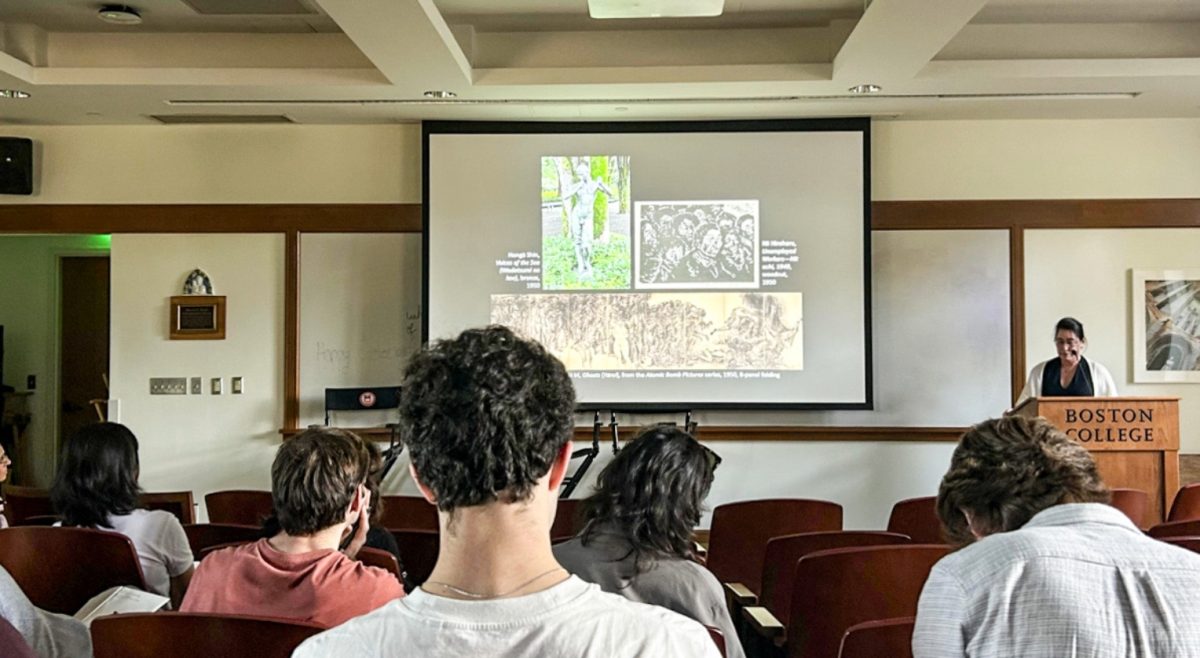The Center for Christian-Jewish Learning hosted a screening of Shores of Light, a documentary unveiling the story of a displaced persons camp for Holocaust refugees in 1940s Italy, last Monday
The film follows the stories of three Israeli women born in the camp in Santa-Maria-di-Leuca as they decide to discover the footprints left by their parents. Director Yael Katzir states, “the film weaves rare historical footage with unique current testimonials capturing a ray of light after great darkness.”
Unique to the Boston College event was the presence of one of these Israeli women, Rivka Cohen. Cohen presented the audience with a speech before the beginning of the film, discussing her research into this story of the past and giving a background for what we were about to see. She was intent on stressing the Italian compassion and welcome they were greeted with while making this film. According to Rivka, “strong feelings of fraternity after 70 years helped restore [their] faith in human decency.”
The film itself clearly evidenced this compassion and fraternity. As the three women traveled to Santa-Maria-di-Leuca to discover more about the great warmth with which their parents were treated in the past, they ended up finding much more. Their process of reconnecting with the past allowed them to connect in new ways with the Italian culture, their own culture, and each other.
The film sets the stage with a narration of the events from a Jewish refugee’s diary that took place directly after the war. It switches between this narration paired with old clips and pictures from the past and the present-day journey of the three Israeli women for the rest of the film, presenting somewhat of a dual timeline. The past and present work together to formulate this depiction of Santa-Maria-di-Leuca and how the refugees were treated after the horrors of the Holocaust.
Tactfully, the film only mentions the war and the Holocaust when it absolutely must. Katzir clearly makes it a point to focus on the power and strength of the refugees to keep moving forward in the wake of the inexplicable disaster. The film does not dwell on negative emotions of fear and terror but illuminates the human goodwill of the displaced persons camp in Italy and provides an example for how important it is to extend love and compassion to refugees and those in need. There were many testimonies from the film that highlighted the importance of the Italian’s aid in moving past the war. Someone in the film remembered how the Jewish refugees fused with the locals, how Santa-Maria-di-Leuca became as close to a home for them as possible under the circumstances.
And under the sanctuary of this home came numerous marriages and hundreds of childbirths. It was remarkable to see the resilience and ultimate flourishing of human life after such a traumatic and terrible event as the Holocaust. One of the diary entries from that time in the film claimed “this was the real triumph over Hitler.” Italian women would lend the refugees their white dresses to get married in. Italian priests would bless the refugees as they left and made passage back to Israel. The Jewish youth would march the streets and sing “we bring peace to you.” Some of the interviewed Italians were brought to tears remembering these events. The film reveals how the warm environment of Santa-Maria-di-Leuca fostered this miracle of revival and gave the refugees hope.
After the film, Cohen returned to the podium to answer questions from the audience. When asked what she thought the “message” of the film was, she replied it was the great example of the relationships between two communities, and the way in which these refugees were treated. She said the reaction to this film in Israel was very emotional because often people weren’t familiar with the in-between period of the Holocaust and the war for independence. Although the immediate displacement period of refugees can be overlooked, it’s important to remember how vital this time is for those coming out of a great disaster.
Featured Image by Katzir Productions













